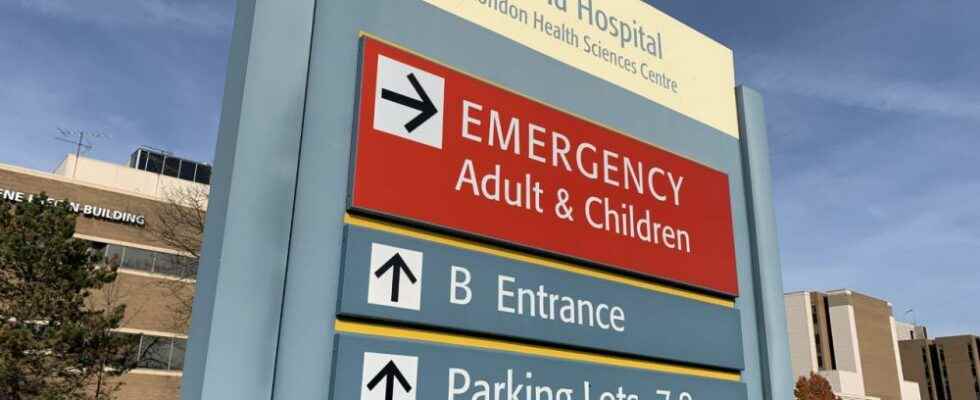The number of COVID-19 patients in intensive care at London Health Sciences Center is nearing zero, new figures released Monday show, after reaching an Omicron wave high of 28 one month ago.

The number of COVID-19 patients in intensive care at London Health Sciences Center is nearing zero, new figures released Monday show, after reaching an Omicron wave high of 28 one month ago.
This advertisement has not loaded yet, but your article continues below.
“It’s extremely significant. It’s in line with our predictions and expectations,” Saverio Stranges, chair of epidemiology and biostatistics at Western University’s Schulich school of medicine and dentistry, said Monday.
“I think this is good news. This is the outcome of the efforts we have made as a community and all the public health work that has been done over the last several months,” he said.
“We’re very optimistic about (the ICU number). It’s great to see the number so low, and we haven’t seen a number that low in some time, but it’s cautious optimism at this point in time,” Adam Dukelow, the chief medical officer at LHSC, said Monday.
The number of ICU patients with the virus was so small Monday the official number publicly reported was “five or fewer.” According to unofficial tracking by The London Free Press, there were 28 COVID patients in intensive care on Feb. 1.
In total Monday, LHSC was treating 44 patients with COVID – but only 13 were hospitalized with the virus. The rest were there for another ailment but also have the virus.
The highest COVID patient count during the Omicron wave was 166 that happened on three dates last month – Jan. 18, 20, and 27.
Asked how close we are to the end of the pandemic, Dukelow said he thinks it’s too early to tell: “We are anticipating that in March, we’ll continue to see some COVID in our hospitals. We have 44 in-patients overall today and that number will hopefully continue to slowly drop.”
This advertisement has not loaded yet, but your article continues below.
But Stranges said “all the signals in the high-income countries” suggest we are making the shift from a pandemic to a place where COVID becomes endemic, like the flu.
“That is what we are leaning toward,” he said.
The positive news was reflected across the community, with public health officials recording zero deaths over the past four days in London and surrounding Middlesex County. There have been 48 local COVID fatalities in February, making it the second-deadliest month of the pandemic here. (The deadliest was January 2021, with 71 deaths.)
Last Wednesday, local public-health officials reported the biggest one-day COVID-19 death toll of the pandemic, with eight fatalities reported.
“We have a very fatigued staff and physicians (at LHSC) who’ve been through a lot, and we’ve had a significant number of staff infected during the Omicron variant. So we look forward to getting through the tail end of this wave, a little bit of rest and then back to business,” Dukelow said.
LHSC is reporting 232 staff are infected with COVID-19.
This week marks something of a landmark in terms of pandemic measures in Ontario, but Londoners are likely to encounter a patchwork of vaccine passport requirements as some businesses and event venues opt to keep them in place despite the province scrapping the requirement effective Tuesday.
After more than five months, the Ontario government will no longer bar unvaccinated people from higher-risk indoor public spaces such as bars, restaurants, gyms and event venues, but is allowing individual businesses to stick with the program if they choose.
Capacity limits in indoor public settings such as arenas and theaters are also being lifted on Tuesday.
